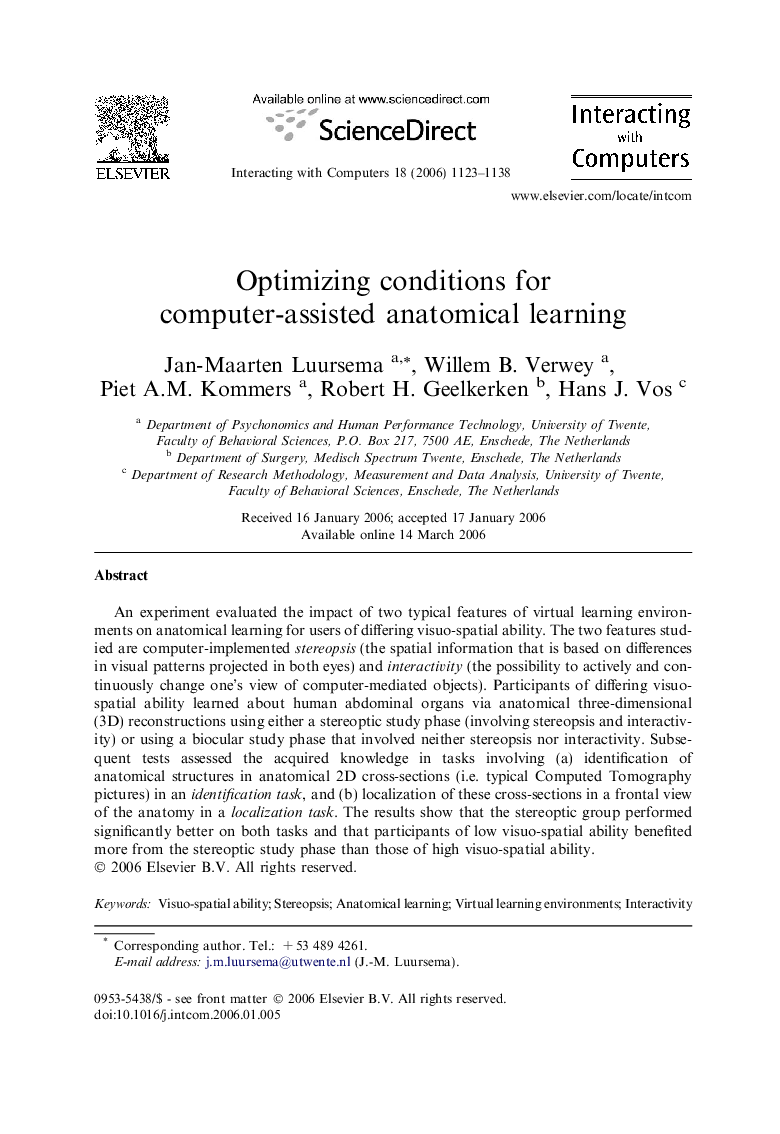| Article ID | Journal | Published Year | Pages | File Type |
|---|---|---|---|---|
| 551938 | Interacting with Computers | 2006 | 16 Pages |
An experiment evaluated the impact of two typical features of virtual learning environments on anatomical learning for users of differing visuo-spatial ability. The two features studied are computer-implemented stereopsis (the spatial information that is based on differences in visual patterns projected in both eyes) and interactivity (the possibility to actively and continuously change one's view of computer-mediated objects). Participants of differing visuo-spatial ability learned about human abdominal organs via anatomical three-dimensional (3D) reconstructions using either a stereoptic study phase (involving stereopsis and interactivity) or using a biocular study phase that involved neither stereopsis nor interactivity. Subsequent tests assessed the acquired knowledge in tasks involving (a) identification of anatomical structures in anatomical 2D cross-sections (i.e. typical Computed Tomography pictures) in an identification task, and (b) localization of these cross-sections in a frontal view of the anatomy in a localization task. The results show that the stereoptic group performed significantly better on both tasks and that participants of low visuo-spatial ability benefited more from the stereoptic study phase than those of high visuo-spatial ability.
